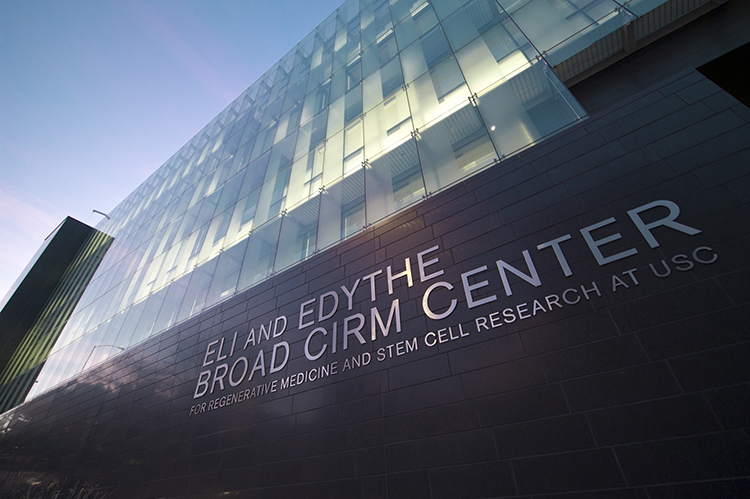
Call it the magnet effect: A run of recruiting success at USC attracts new scholars who, in turn, become powerful draws for top colleagues, students and supporters.
Magnet faculty newly recruited from prestigious institutions, such as Harvard University, the California Institute of Technology (Caltech) and the University of California, San Diego (UCSD), promise to create clusters of excellence to rival those built by a previous generation of equally distinguished scholars.
Early fruits of the strategy, begun soon after current USC President C. L. Max Nikias became the university’s provost in 2005, are already visible.
• Antonio and Hanna Damasio, world-renowned neuroscientists and pioneers in the study of emotion and the artistic impulse, founded the Brain and Creativity Institute (BCI) in 2006, which this fall opened its doors to a stunning new home. The Damasios and the 12 senior researchers they recruited have authored more than 200 publications, received major federal and private research grants, and collaborated with several USC schools and international scholars and artists. The BCI and the USC Dornsife College of Letters, Arts and Sciences that houses it have benefited greatly from the philanthropic support of Dana and David Dornsife ’65, after whom the college was named in 2011.
• Dana Goldman, a leading researcher in the rapidly growing field of health care delivery, came to USC with a team of colleagues from the Rand Corp. in 2009 to establish the Leonard D. Schaeffer Center for Health Policy and Economics. Housed in the USC Price School of Public Policy and the USC School of Pharmacy, the Schaeffer Center now counts 16 faculty, including Nobel Prize-winning economist Daniel McFadden, along with 11 researchers and analysts. The center’s growth and publishing record justified a major new gift, announced this fall, from namesake Leonard D. Schaeffer.
• Jae Jung, recipient of this year’s prestigious Ho-Am Prize in Medicine, came to USC from Harvard Medical School in 2007 and revitalized the Department of Molecular Microbiology and Immunology at the Keck School of Medicine of USC. Jung has turned the department into a vital center for the study of cancer-causing viruses, more than doubling the number of faculty and increasing its annual grant portfolio eightfold.
Consider, then, the potential of magnet faculty who have joined USC just in the last 18 months with support from The Campaign for the University of Southern California, a $6 billion fundraising drive that set a new record in higher education when announced last fall.
Among them:
• Andrew McMahon, one of the world’s preeminent experts in stem cell medicine, previously at Harvard, who turned down the University of California, San Francisco, and joined USC with a large laboratory to lead the Eli and Edythe Broad Center for Regenerative Medicine and Stem Cell Research at USC
• Scott Fraser, who invented and built a new generation of medical imaging tools, obtained more than 40 patents for his discoveries and helped establish three major research institutes at Caltech
• New USC Dornsife Dean Steve A. Kay, a member of the National Academy of Sciences and world expert on circadian rhythms, who raised the graduate program in biological sciences at UCSD to a No. 1 ranking in the country
They are joined by other outstanding new faculty, including USC Norris Comprehensive Cancer Center Director Stephen B. Gruber, who left a top-15 rated cancer center at the University of Michigan; Pinchas Cohen, a noted researcher on the hormonal drivers of growth and aging who left the University of California, Los Angeles, to lead the USC Davis School of Gerontology; and Berislav Zlokovic, director of the Zilkha Neurogenetic Institute, who was recruited from the University of Rochester Medical Center in New York for his expertise in the study of dementia and Alzheimer’s disease.
It should also be noted that USC serves as a big tent for all modes of inquiry, supporting existing and new scholars whose fields of study may not necessarily fit the magnet faculty model.
This is the case especially in the humanities, home to such renowned scholars as California historian Kevin Starr, USC University Professor, and MacArthur Foundation “genius grant” recipients Elyn Saks of the USC Gould School of Law and more recently recruited scholars Jacob Soll of USC Dornsife, a leader in the use of accounting to study history, and Luis Alfaro of the USC School of Dramatic Arts, a noted writer/performer whose work spans poetry, theater, short stories and journalism, and who previously served as director of new play development at the Mark Taper Forum — just four names in a faculty whose combined strength places USC among the top private research universities across the nation.
But as the university’s strategic plan points out, the rise of megacities and a networked planet calls for research that can address urgent global challenges in health care, energy, technology and many other facets of a sustainable world.
Such challenges often cannot be solved without the joint effort of many clusters and centers of scholars.
As Elizabeth Garrett, USC provost and senior vice president for academic affairs, outlined when introducing the strategic plan in late 2011: “Today’s great universities are called to address global challenges, spark creativity, invent and innovate, connect peoples and help improve the quality of life.
“USC is uniquely positioned to answer this call,” Garrett continued. “Our breadth, size, diversity, location, international character and global reach have positioned USC as the intellectual, creative and cultural wellspring for the Pacific Rim and emerging societies of Asia and Latin America.”
